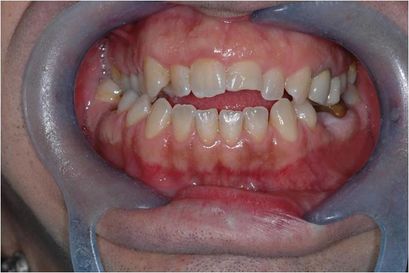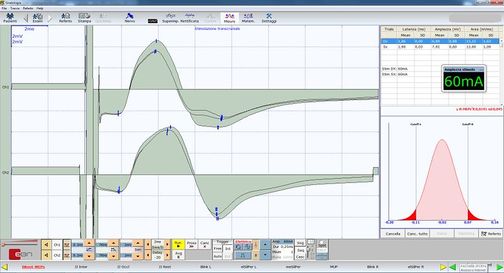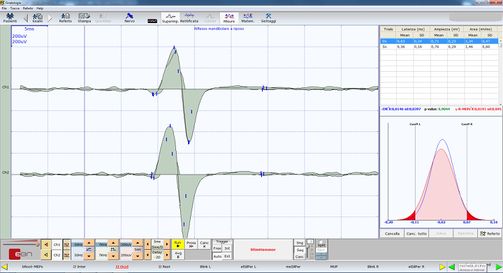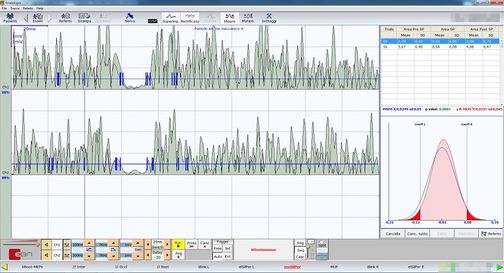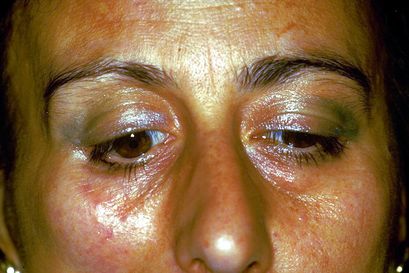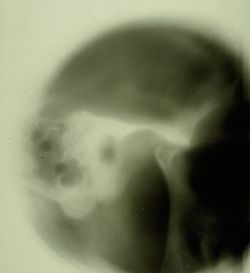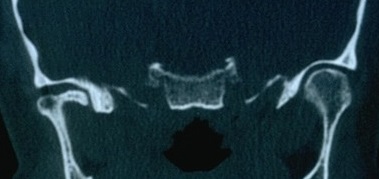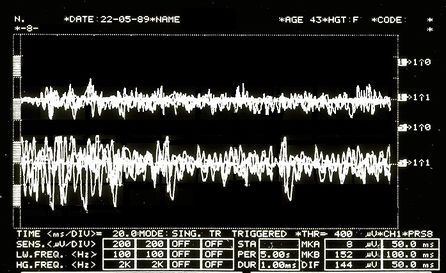Difference between revisions of "The logic of classical language/es"
(Created page with "Pero, cuidado, sólo en su propio contexto dental") |
(Created page with "quizás") |
||
| (24 intermediate revisions by the same user not shown) | |||
| Line 773: | Line 773: | ||
{{q4|Siguiendo la lógica del lenguaje clásico, el dentista tiene razón!|Parecería que! <br>Pero, cuidado, sólo en su propio contexto dental!}} | {{q4|Siguiendo la lógica del lenguaje clásico, el dentista tiene razón!|Parecería que! <br>Pero, cuidado, sólo en su propio contexto dental!}} | ||
| − | + | Esta afirmación es tan cierta que el <math>Valor-P</math> podría extenderse infinitamente, ampliarse lo suficiente para obtener una <math>\alpha=0</math> que le corresponde en una significación infinita, mientras permanezca limitada en su contexto; sin embargo, sin significar nada desde el punto de vista clínico en otros contextos, como en el del neurólogo, por ejemplo. | |
| − | == | + | ==Consideraciones finales== |
| − | + | Desde una perspectiva de observación de este tipo, la Lógica de los Predicados sólo puede fortificar el razonamiento del dentista y, al mismo tiempo, reforzar la <u>principio del tercero excluido</u>: el principio se refuerza mediante la compatibilidad de las afirmaciones adicionales <math>(\delta_1,\delta_2,.....\delta_n \ )</math> que otorgan al dentista una completa coherencia en el diagnóstico y en la confirmación de la sentencia <math>\Im</math>: La pobre Mary Poppins o tiene TTM, o no tiene. | |
| − | {{q4|... | + | {{q4|...¿y si, con el avance de la investigación, se descubrieran nuevos fenómenos que dieran la razón al neurólogo, en lugar de al dentista?|}} |
| − | + | Básicamente, dada la compatibilidad de las afirmaciones <math>(\delta_1,\delta_2,.....\delta_n \ )</math>, Decir coherentemente que el Dolor Orofacial es causado por un Trastorno Temporomandibular podría ser incompatible si otra serie de afirmaciones <math>(\gamma_1,\gamma_2,.....\gamma_n \ )</math> se mostraron coherentes: esto haría compatible una sentencia diferente <math>\Im</math>: ¿podría la pobre Mary Poppins sufrir dolor orofacial por un trastorno neuromotor (<sub>n</sub>OP) y no por un Trastorno Temporomandibular? | |
| − | + | En la lógica del lenguaje médico actual, tales afirmaciones sólo se quedan en afirmaciones, porque las convicciones y opiniones no permiten un cambio consecuente y rápido de la mentalidad. | |
| − | + | Además, teniendo en cuenta el riesgo que supone este cambio, de hecho, podríamos considerar un artículo reciente sobre la epidemiología de los trastornos temporomandibulares<ref>{{cite book | |
| autore = LeResche L | | autore = LeResche L | ||
| titolo = Epidemiology of temporomandibular disorders: implications for the investigation of etiologic factors | | titolo = Epidemiology of temporomandibular disorders: implications for the investigation of etiologic factors | ||
| Line 798: | Line 798: | ||
| DOI = 10.1177/10454411970080030401 | | DOI = 10.1177/10454411970080030401 | ||
| oaf = <!-- qualsiasi valore --> | | oaf = <!-- qualsiasi valore --> | ||
| − | }}</ref> | + | }}</ref> en el que los autores confirman que, a pesar de las diferencias metodológicas y poblacionales, el dolor en la región temporomandibular parece ser relativamente común, presentándose en alrededor del 10% de la población; podemos entonces objetivar la hipótesis de que nuestra Mary Poppins puede ser incluida en el 10% de los pacientes mencionados en el estudio epidemiológico, y contextualmente ser clasificada como una paciente que sufre de Dolor Orofacial por Trastornos Temporomandibulares (TTM). |
| − | + | En conclusión, es evidente que una lógica clásica del lenguaje, que tiene un enfoque extremadamente dicotómico (o es blanco o es negro), no puede representar los múltiples matices que se dan en las situaciones clínicas reales. | |
| − | + | Tenemos que encontrar una lógica de lenguaje más conveniente y adecuada... | |
| − | {{q4|... | + | {{q4|... ¿podemos pensar entonces en una Lógica del Lenguaje Probabilista?|quizás}} |
{{Btnav|The logic of medical language|The logic of probabilistic language}} | {{Btnav|The logic of medical language|The logic of probabilistic language}} | ||
Latest revision as of 19:18, 1 November 2021
En conclusión, es evidente que una lógica clásica del lenguaje, que tiene un enfoque extremadamente dicotómico (o algo es blanco, o es negro), no puede describir los muchos matices que tienen las situaciones clínicas reales.
Como pronto veremos, este trabajo mostrará que la lógica clásica carece de la precisión necesaria, lo que nos obliga a mejorarla con otros tipos de lenguajes lógicos.
Introducción
Nos habíamos separado en el capítulo anterior sobre la 'Lógica del lenguaje médico' en un intento de desplazar la atención del síntoma o signo clínico al lenguaje de máquina encriptado para lo cual, los argumentos de Donald E Stanley, Daniel G Campos y Pat Croskerry son bienvenidos pero conectados al tiempo como portador de información (anticipación del síntoma) y al mensaje como lenguaje de máquina y no como lenguaje no verbal).[1][2]
Obviamente, esto no excluye la validez de la historia clínica construida sobre un lenguaje verbal pseudo-formal a estas alturas bien arraigado en la realidad clínica y que ya ha demostrado su autoridad diagnóstica. El intento de trasladar la atención a un lenguaje de máquina y al Sistema no proporciona más que una oportunidad para la validación de la Ciencia Médica de Diagnóstico.
Definitivamente, somos conscientes de que nuestro Sapiens Linux sigue perplejo ante lo que se ha anticipado y continúa preguntándose
(un poco de paciencia, por favor)
No podemos dar una respuesta convencional porque la ciencia no avanza con afirmaciones que no estén justificadas por preguntas y reflexiones científicamente validadas; y esta es la razón por la que trataremos de dar voz a algunas reflexiones, perplejidades y dudas expresadas sobre algunos temas básicos puestos en discusión en algunos artículos científicos.
Uno de estos temas fundamentales es la "Biología Craneofacial"..
Empecemos con un conocido estudio de Townsend y Brook[3]: en esta obra los autores cuestionan el status quo de la investigación tanto fundamental como aplicada en "Biología Craneofacial" para extraer consideraciones e implicaciones clínicas. Uno de los temas que trataron fue el "Enfoque Interdisciplinario", en el que Geoffrey Sperber y su hijo Steven vieron la fuerza del progreso exponencial de la 'Biología Craneofacial' en innovaciones tecnológicas como la secuenciación de genes, la tomografía computarizada, las imágenes de resonancia magnética, el láser de barrido, el análisis de imágenes, la ultrasonografía y la espectroscopia[4].
Otro tema de gran interés para la aplicación de la "Biología Craneofacial" es la conciencia de que los sistemas biológicos son "Sistemas Complejos[5] y que la "epigenética" desempeña un papel clave en la biología molecular craneofacial. Investigadores de Adelaida y Sydney ofrecen una revisión crítica en el campo de la epigenética dirigida, de hecho, a las disciplinas dentales y craneofaciales.[6] La fenómica, en particular, discutida por estos autores (véase Fenómica) es un campo de investigación general que implica la medición de los cambios en los dientes y las estructuras orofaciales asociadas resultantes de las interacciones entre los factores genéticos, epigenéticos y ambientales durante el desarrollo.[7] En este mismo contexto, cabe destacar el trabajo de Irma Thesleff, de Helsinki (Finlandia). En su trabajo explica que hay una serie de centros de señalización transitoria en el epitelio dental que desempeñan importantes funciones en el programa de desarrollo de los dientes.[8] Además hay otros trabajos, de Peterkova R, Hovor akova M, Peterka M, Lesot H, que proporcionan una fascinante revisión de los procesos que ocurren durante el desarrollo dental;[9][10][11] en aras de la exhaustividad, no olvidemos los trabajos de Han J, Menicanin D, Gronthos S, y Bartold PM., que revisan una amplia documentación sobre las células madre, la ingeniería de tejidos y la regeneración periodontal.[12]
En esta revisión no podían faltar los argumentos sobre las influencias genéticas, epigenéticas y ambientales durante la morfogénesis que conducen a variaciones en el número, tamaño y forma del diente[13][14] y la influencia de la presión lingual en el crecimiento y la función craneofacial.[15][16]
El extraordinario trabajo de Townsend y Brook también merece una mención[3], y el contenido intrínseco de lo relatado en él coincide igualmente con otro autor encomiable: HC Slavkin.[17] Slavkin afirma que:
- "El futuro está lleno de importantes oportunidades para mejorar los resultados clínicos de las malformaciones craneofaciales congénitas y adquiridas. Los clínicos desempeñan un papel fundamental, ya que el pensamiento crítico y la audiencia clínica mejoran sustancialmente la precisión del diagnóstico y, por tanto, los resultados clínicos en materia de salud."
(Le daré un ejemplo práctico)
En el capítulo "Introducción" planteamos ciertas preguntas sobre el tema de la maloclusión pero en este contexto simulamos la lógica del lenguaje médico del dentista ante el caso clínico presentado en el "capítulo de introducción" con sus conclusiones diagnósticas y terapéuticas.
El paciente tiene una mordida cruzada unilateral posterior y una mordida abierta anterior.[18] La mordida cruzada es otro elemento perturbador de la oclusión normal[19] por lo que se trata obligatoriamente junto con la mordida abierta.[20][21] Este tipo de razonamiento significa que el modelo (sistema masticatorio) está "normalizado a la oclusión"; y leído al revés, significa que la discrepancia oclusal es la causa de la maloclusión, por lo tanto, una enfermedad del Sistema Masticatorio, y por lo tanto una intervención para restaurar la función masticatoria fisiológica es justificable. (Figura 1a).
Este ejemplo es el Lenguaje Lógico Clásico, como vamos a explicar en detalle, pero ahora surge una duda:
- En la época en que los axiomas de la ortodoncia y la ortognática construían protocolos confirmados por la Comunidad Científica Internacional, ¿conocían la información de la que hablamos en la introducción de este capítulo?
Ciertamente no porque el tiempo es el portador de la información pero a pesar de este límite cognitivo se procede con una Lógica del Lenguaje Clásico muy cuestionable para la seguridad del ciudadano.
(Claro, pero la secuencia lógica ya se ha anticipado)
Si el mismo caso se interpretara con una mentalidad que siguiera una "lógica del lenguaje del sistema" (se tratará en el capítulo correspondiente), las conclusiones serían sorprendentes.
Si observamos las respuestas electrofisiológicas realizadas al paciente con maloclusión en las figuras 1b, 1c y 1d (con la explicación hecha directamente en el pie de foto para simplificar la discusión), nos daremos cuenta de que estos datos pueden hacernos pensar en cualquier cosa menos en una 'Maloclusión' y, por tanto, los axiomas de tipo ortodóntico y ortognático 'causa/efecto' dejan un vacío conceptual.
(Lo haremos siguiendo el caso clínico de nuestra Mary Poppins)
Formalismo matemático
En este capítulo, vamos a reconsiderar el caso clínico de la desafortunada Mary Poppins que sufre de dolor orofacial desde hace más de 10 años y a la que su dentista diagnosticó un "Trastorno Temporomandibular" (TTM) o más bien dolor orofacial por TTM. Para entender mejor por qué la formulación diagnóstica exacta sigue siendo compleja con una Lógica del Lenguaje Clásico, debemos entender el concepto en el que se basa la filosofía del lenguaje clásico con una breve introducción al tema.
Proposiciones
La lógica clásica se basa en las proposiciones. A menudo se dice que una proposición es una frase que pregunta si la proposición es verdadera o falsa. De hecho, una proposición en matemáticas suele ser verdadera o falsa, pero esto es obviamente demasiado vago para ser una definición. Puede tomarse, en el mejor de los casos, como una advertencia: si una frase, expresada en el lenguaje común, no tiene sentido preguntar si es verdadera o falsa, no será una proposición sino otra cosa.
Se puede discutir si las frases del lenguaje común son o no proposiciones, ya que en muchos casos no suele ser evidente si una determinada afirmación es verdadera o falsa.
‘Afortunadamente, las proposiciones matemáticas, si están bien expresadas, no presentan tales ambigüedades’.
Las proposiciones más simples pueden combinarse entre sí para formar nuevas proposiciones más complejas. Esto ocurre con la ayuda de operadores llamados operadores lógicos y conectivos cuantificadores que pueden reducirse a lo siguiente[22]:
- Conjunción, que se indica con el símbolo (and):
- Disyunción, que se indica con el símbolo (or):
- Negación, que se indica con el símbolo (not):
- Implicación, que se indica con el símbolo (if ... then):
- Consecuencia, que se indica con el símbolo (is a partition of..):
- Cuantificador universal, que se indica con el símbolo (for all):
- Demostración, que se indica con el símbolo (such that): and
- Afiliación, que se indica con el símbolo (is an element of) o por el símbolo (is not an element of):
Demostración por el absurdo
Además, en la lógica clásica existe un principio llamado tercera excluida que declara que una frase que no puede ser falsa debe tomarse como verdadera ya que no existe una tercera posibilidad.
Supongamos que necesitamos demostrar que la proposición es verdadera. El procedimiento consiste en mostrar que la suposición de que es falsa conduce a una contradicción lógica. Así, la proposición no puede ser falsa, y por tanto, según la ley del tercio excluso, debe ser verdadera. Este método de demostración se llama demostración por absurdo.[23]
Predicados
Lo que hemos descrito brevemente hasta ahora es la lógica de las proposiciones. Una proposición afirma algo sobre objetos matemáticos concretos, como por ejemplo "2 es mayor que 1, por lo que 1 es menor que 2" o "un cuadrado no tiene 5 lados, por lo que un cuadrado no es un pentágono".. Sin embargo, muchas veces los enunciados matemáticos no se refieren a un solo objeto, sino a objetos genéricos de un conjunto como: ' son más altos de 2 metros' dónde denota un grupo genérico (por ejemplo, todos los jugadores de voleibol). En este caso se habla de predicados.
Intuitivamente, un predicado es una frase que se refiere a un grupo de elementos (que en nuestro caso médico serán los pacientes) y que afirma algo sobre ellos.
(veamos lo que nos dice la Lógica del Lenguaje Clásico)
Además de las confirmaciones derivadas de la lógica del lenguaje médico comentada en el capítulo anterior, el colega odontólogo adquiere otros datos instrumentales que le permiten confirmar su diagnóstico. Estas últimas pruebas se refieren al análisis de los trazos axiográficos mediante el uso de un embrague funcional paraoclusal personalizado que permite visualizar y cuantificar los trazos condilares en las funciones masticatorias. Como se puede observar en la figura 4, el aplanamiento de los trazos condilares del lado derecho tanto en la cinética masticatoria mediotrusiva (color verde) como en los ciclos de apertura y protrusión (color gris) confirman el aplanamiento anatómico y funcional de la ATM derecha en la dinámica masticatoria. Además de la axiografía, el colega realiza una electromiografía de superficie en los maseteros (Fig. 6) pidiendo al paciente que ejerza el máximo de su fuerza muscular. Este tipo de análisis electromiográfico se denomina "patrón interferencial EMG" debido al contenido de alta frecuencia de los picos que sufren interferencia de fase. De hecho, la figura 6 muestra una asimetría en el reclutamiento de las unidades motoras del masetero derecho (trazo superior) en comparación con las del masetero izquierdo (trazo inferior).[24][25][26][27]
Segundo abordaje clínico
(pasar el cursor sobre las imágenes)
Propuestas dentales
Al tratar de utilizar el formalismo matemático para traducir las conclusiones alcanzadas por el dentista con el lenguaje lógico clásico, consideramos los siguientes predicados:
- x Pacientes normales (normal significa pacientes que se presentan comúnmente en el entorno del especialista)
- Remodelación ósea con osteofito a partir del examen estratigráfico y la TC condilar; y
- Trastornos temporomandibulares (TTM) que provocan dolor orofacial (OP)
- Paciente específico: Mary Poppins
Cualquier paciente normal que es positivo en el examen radiográfico de la ATM [Figura 2 y 3] se ve afectado por los TTM ; De esto se deduce que ser Mary Poppins positivo (y también ser un paciente "Normal") en la radiografía de la ATM entonces Mary Poppins también está afectada por los TTM
El lenguaje de los predicados se expresa de la siguiente manera:
.
Llegados a este punto, también hay que considerar que la lógica de predicados no se utiliza sólo para demostrar que un determinado conjunto de premisas implica una determinada evidencia . También se utiliza para demostrar que una determinada afirmación no es cierta, o que un determinado conocimiento es lógicamente compatible/incompatible con una determinada prueba.
Para demostrar que esta proposición es cierta debemos utilizar la mencionadademostración por el absurdo. Si su negación crea una contradicción, seguramente la proposición del dentista será verdadera:
.
"" afirma que no es cierto que los que dan positivo en el TAC de la ATM tengan TTM, por lo que Mary Poppins (paciente normal positivo en el TAC de la ATM) no tiene TTM.
El dentista cree que la afirmación de Mary Poppins (que no tiene TTM bajo estas premisas) es una contradicción por lo que la afirmación principal es verdadera.
Propuesta neurofisiológica
Imaginemos que el neurólogo no está de acuerdo con la conclusión y afirma que Mary Poppins no está afectada por los TTM o que, al menos, no es la causa principal del dolor orofacial, sino que, más bien, está afectada por un dolor orofacial neuromotor (nOP), por lo tanto, no pertenece al grupo de "pacientes normales", sino que debe considerarse un "paciente inespecífico" (poco común en el contexto especializado).
Obviamente, esta dialéctica duraría indefinidamente porque ambos defenderían su contexto científico-clínico; pero veamos qué ocurre en la lógica de los predicados.
La declaración del neurólogo sería como:
.
"" significa que todos los pacientes que dan positivo en el TAC de la ATM tienen TTM, pero aunque Mary Poppins dé positivo en el TAC de la ATM, no tiene TTM.
Para demostrar que esta proposición es cierta, debemos utilizar una vez más la mencionada demostración por el absurdo. Si su negación crea una contradicción, seguramente la proposición del neurólogo será verdadera:
.
Siguiendo las reglas lógicas de los predicados, no hay razón para decir que la negación (4) es contradictoria o carece de sentido, por lo que el neurólogo (a diferencia del dentista) no parece tener las herramientas lógicas para confirmar su conclusión.
Compatibilidad e incompatibilidad de las declaraciones
La complicación radica en que el odontólogo presentará como informes clínicos una serie de afirmaciones como la estratigrafía y el TAC de la ATM, que indican un aplanamiento anatómico de la articulación, la axiografía de los trazos condilares con una reducción de la convexidad cinemática y un patrón de interferencia del EMG del trazado en el que destaca un patrón asimétrico en los maseteros. Estas afirmaciones pueden considerarse fácilmente como una causa que contribuye al daño de la articulación temporomandibular y, por tanto, responsable del "dolor orofacial.
Se pueden utilizar documentos, informes y pruebas clínicas para hacer incompatible la afirmación del neurólogo y la conclusión diagnóstica del dentista. Para ello debemos presentar algunas reglas lógicas que describen la compatibilidad o incompatibilidad de la lógica del lenguaje clásico:
- Un conjunto de frases , y un número de otras frases o afirmaciones son lógicamente compatibles si, y sólo si, la unión entre ellos es coherente.
- Un conjunto de frases , y un número de otras frases o afirmaciones son lógicamente incompatibles si, y sólo si, la unión entre ellos es incoherente.
Intentemos seguir este razonamiento con ejemplos prácticos:
El colega dentista expone la siguiente frase:
: Siguiendo las técnicas personalizadas sugeridas por Xin Liang et al.[28] que se centra en el análisis microestructural cuantitativo de la fracción del valor óseo, el número trabecular, el grosor trabecular y la separación trabecular en cada corte del TAC de una ATM, parece que Mary Poppins está afectada por Trastornos Temporomandibulares (TTM) y la consecuencia provoca Dolor Orofacial.
En este punto, sin embargo, la tesis debe ser confirmada con más pruebas clínicas y de laboratorio, y de hecho el colega produce una serie de afirmaciones que deberían pasar el filtro de compatibilidad descrito anteriormente, a saber:
Remodelación ósea: El aplanamiento de los trazos axiográficos destacados en la figura 5 indica la remodelación articular de la ATM derecha de Mary Poppins, dicho informe puede correlacionarse con una serie de investigaciones y artículos que confirman cómo la maloclusión puede estar asociada a cambios morfológicos en las articulaciones temporomandibulares, especialmente cuando se combina con la edad, ya que la presencia de una maloclusión crónica puede empeorar el cuadro de remodelación ósea.[29] Estas referencias científicas determinan la compatibilidad de la afirmación.
Sensibilidad y especificidad de la medición axiográfica: Se realizó un estudio para verificar la sensibilidad y especificidad de los datos recogidos de un grupo de pacientes afectados por trastornos de la articulación temporomandibular con un sistema axiográfico ARCUSdigma[30]; confirmó una sensibilidad del 84,21% y del 92,86% para las ATMs derecha e izquierda respectivamente, y una especificidad del 93,75% y del 95,65%.[31] Estas referencias científicas determinan la compatibilidad de la afirmación en el contexto dental precisamente por la consistencia de los estudios relacionados.[32]
Alteración de los recorridos condilares: Urbano Santana-Mora y coll.[33] evaluó a 24 pacientes adultos que padecían dolor unilateral severo diagnosticado como Trastornos Temporomandibulares (TTM). Se evaluaron los siguientes factores funcionales y dinámicos:
- función masticatoria;
- remodelación de la ATM o vía condilar (CP); y
- movimiento lateral de la mandíbula o guía lateral (LG).
Los CP se evaluaron mediante axiografía convencional y el LG se evaluó mediante el trazado kinesiográfico[34]; Diecisiete (71%) de los 24 (100%) pacientes mostraron sistemáticamente un lado de masticación habitual. La media y la desviación estándar de los ángulos del PC fueron de 47,90 9.24) grados. La media de los ángulos LG fue de 42,9511.78 grados.
La recopilación de datos surgió de la concepción de un nuevo paradigma de TTM en el que el lado afectado podía ser el lado habitual de la masticación, el lado en el que el ángulo cinemático lateral mandibular era más plano. Este parámetro también puede ser compatible con el reclamo dental.
Patrón de interferencia EMG: M.O. Mazzetto y coll.[35] mostraron que la actividad electromiográfica de los músculos temporales anteriores y del masetero estaba positivamente correlacionada con el "índice craneomandibular", indicado (CMI) con un y sugiriendo que el uso del CMI para cuantificar la gravedad de los TTM y del EMG para evaluar la función muscular masticatoria, puede ser un importante elemento diagnóstico y terapéutico. Estas referencias científicas determinan la compatibilidad de la afirmación.
?
Evidentemente, el colega dentista podría seguir lanzando sus declaraciones indefinidamente.
Bien, todas estas afirmaciones parecen coherentes con la frase descrito inicialmente, por la que el colega dentista se siente justificado al decir que el conjunto de sentencias , y un número de otras afirmaciones o datos clínicos son lógicamente compatibles ya que la unión entre ellos es coherente.
(Parecería que!
Pero, cuidado, sólo en su propio contexto dental!)
Esta afirmación es tan cierta que el podría extenderse infinitamente, ampliarse lo suficiente para obtener una que le corresponde en una significación infinita, mientras permanezca limitada en su contexto; sin embargo, sin significar nada desde el punto de vista clínico en otros contextos, como en el del neurólogo, por ejemplo.
Consideraciones finales
Desde una perspectiva de observación de este tipo, la Lógica de los Predicados sólo puede fortificar el razonamiento del dentista y, al mismo tiempo, reforzar la principio del tercero excluido: el principio se refuerza mediante la compatibilidad de las afirmaciones adicionales que otorgan al dentista una completa coherencia en el diagnóstico y en la confirmación de la sentencia : La pobre Mary Poppins o tiene TTM, o no tiene.
Básicamente, dada la compatibilidad de las afirmaciones , Decir coherentemente que el Dolor Orofacial es causado por un Trastorno Temporomandibular podría ser incompatible si otra serie de afirmaciones se mostraron coherentes: esto haría compatible una sentencia diferente : ¿podría la pobre Mary Poppins sufrir dolor orofacial por un trastorno neuromotor (nOP) y no por un Trastorno Temporomandibular?
En la lógica del lenguaje médico actual, tales afirmaciones sólo se quedan en afirmaciones, porque las convicciones y opiniones no permiten un cambio consecuente y rápido de la mentalidad.
Además, teniendo en cuenta el riesgo que supone este cambio, de hecho, podríamos considerar un artículo reciente sobre la epidemiología de los trastornos temporomandibulares[36] en el que los autores confirman que, a pesar de las diferencias metodológicas y poblacionales, el dolor en la región temporomandibular parece ser relativamente común, presentándose en alrededor del 10% de la población; podemos entonces objetivar la hipótesis de que nuestra Mary Poppins puede ser incluida en el 10% de los pacientes mencionados en el estudio epidemiológico, y contextualmente ser clasificada como una paciente que sufre de Dolor Orofacial por Trastornos Temporomandibulares (TTM).
En conclusión, es evidente que una lógica clásica del lenguaje, que tiene un enfoque extremadamente dicotómico (o es blanco o es negro), no puede representar los múltiples matices que se dan en las situaciones clínicas reales.
Tenemos que encontrar una lógica de lenguaje más conveniente y adecuada...
- ↑ Stanley DE, Campos DG, «The logic of medical diagnosis», in Perspect Biol Med, 2013.
PMID:23974509
DOI:10.1353/pbm.2013.0019 - ↑ Croskerry P, «Adaptive expertise in medical decision making», in Med Teach, 2018.
PMID:30033794
DOI:10.1080/0142159X.2018.1484898 - ↑ 3.0 3.1 Townsend GC, Brook AH, «The face, the future, and dental practice: how research in craniofacial biology will influence patient care», in Aust Dent J, Australian Dental Association, 2014.
PMID:24646132
DOI:10.1111/adj.12157 - ↑ Sperber GH, Sperber SM, «The genesis of craniofacial biology as a health science discipline», in Aust Dent J, Australian Dental Association, 2014.
PMID:24495071
DOI:10.1111/adj.12131 - ↑ Brook AH, Brook O'Donnell M, Hone A, Hart E, Hughes TE, Smith RN, Townsend GC, «General and craniofacial development are complex adaptive processes influenced by diversity», in Aust Dent J, Australian Dental Association, 2014.
PMID:24617813
DOI:10.1111/adj.12158 - ↑ Williams SD, Hughes TE, Adler CJ, Brook AH, Townsend GC, «Epigenetics: a new frontier in dentistry», in Aust Dent J, Australian Dental Association, 2014.
PMID:24611746
DOI:10.1111/adj.12155 - ↑ Yong R, Ranjitkar S, Townsend GC, Brook AH, Smith RN, Evans AR, Hughes TE, Lekkas D, «Dental phenomics: advancing genotype to phenotype correlations in craniofacial research», in Aust Dent J, Australian Dental Association, 2014.
PMID:24611797
DOI:10.1111/adj.12156 - ↑ Thesleff I, «Current understanding of the process of tooth formation: transfer from the laboratory to the clinic», in Aust Dent J, 2013.
DOI:10.1111/adj.12102 - ↑ Peterkova R, Hovorakova M, Peterka M, Lesot H, «Three‐dimensional analysis of the early development of the dentition», in Aust Dent J, Wiley Publishing Asia Pty Ltd on behalf of Australian Dental Association, 2014.
DOI:10.1111/adj.12130 - ↑ Lesot H, Hovorakova M, Peterka M, Peterkova R, «Three‐dimensional analysis of molar development in the mouse from the cap to bell stage», in Aust Dent J, 2014.
DOI:10.1111/adj.12132 - ↑ Hughes TE, Townsend GC, Pinkerton SK, Bockmann MR, Seow WK, Brook AH, Richards LC, Mihailidis S, Ranjitkar S, Lekkas D, «The teeth and faces of twins: providing insights into dentofacial development and oral health for practising oral health professionals», in Aust Dent J, 2013.
DOI:10.1111/adj.12101 - ↑ Han J, Menicanin D, Gronthos S, Bartold PM, «Stem cells, tissue engineering and periodontal regeneration», in Aust Dent J, 2013.
DOI:10.1111/adj.12100 - ↑ {{Cite book | autore = Brook AH | autore2 = Jernvall J | autore3 = Smith RN | autore4 = Hughes TE | autore5 = Townsend GC | titolo = The Dentition: The Outcomes of Morphogenesis Leading to Variations of Tooth Number, Size and Shape | url = https://onlinelibrary.wiley.com/doi/epdf/10.1111/adj.12160 | volume = | opera = Aust Dent J | anno = 2014 | editore = | città = | ISBN = | PMID = | PMCID = | DOI = 10.1111/adj.12160 | oaf = | LCCN = | OCLC =
- ↑ Seow WK, «Developmental defects of enamel and dentine: challenges for basic science research and clinical management», in Aust Dent J, 2014.
PMID:24164394
DOI:10.1111/adj.12104 - ↑ Kieser JA, Farland MG, Jack H, Farella M, Wang Y, Rohrle O, «The role of oral soft tissues in swallowing function: what can tongue pressure tell us?», in Aust Dent J, 2013.
DOI:10.1111/adj.12103 - ↑ Slavkin HC, «Research on Craniofacial Genetics and Developmental Biology: Implications for the Future of Academic Dentistry», in J Dent Educ, 1983.
PMID:6573384 - ↑ Slavkin HC, «The Future of Research in Craniofacial Biology and What This Will Mean for Oral Health Professional Education and Clinical Practice», in Aust Dent J, 2014.
PMID:24433547
DOI:10.1111/adj.12105 - ↑
Littlewood SJ, Kandasamy S, Huang G, «Retention and relapse in clinical practice», in Aust Dent J, 2017.
DOI:10.1111/adj.12475 - ↑ Miamoto CB, Silva Marques L, Abreu LG, Paiva SM, «Impact of two early treatment protocols for anterior dental crossbite on children’s quality of life», in Dental Press J Orthod, 2018.
- ↑ Alachioti XS, Dimopoulou E, Vlasakidou A, Athanasiou AE, «Amelogenesis imperfecta and anterior open bite: Etiological, classification, clinical and management interrelationships», in J Orthod Sci, 2014.
DOI:10.4103/2278-0203.127547 - ↑ Mizrahi E, «A review of anterior open bite», in Br J Orthod, 1978.
PMID:284793
DOI:10.1179/bjo.5.1.21 - ↑ Para simplificar la exposición y la lectura, en este capítulo trataremos el símbolo de pertenencia, el símbolo de consecuencia y el tal que como si fueran cuantificadores y conectivas de proposiciones en la lógica clásica.
Estrictamente hablando, dentro de la lógica clásica no deben ser tratados como tales, pero aunque lo hagamos, esto no cambia absolutamente el sentido del discurso y no se crean incoherencias de ningún tipo. - ↑ Pereira LM, Pinto AM, «Reductio ad Absurdum Argumentation in Normal Logic Programs», Arg NMR, 2007, Tempe, Arizona - Caparica, Portugal – in Argumentation and Non-Monotonic Reasoning - An LPNMR Workshop.
- ↑ Castroflorio T, Talpone F, Deregibus A, Piancino MG, Bracco P, «Effects of a Functional Appliance on Masticatory Muscles of Young Adults Suffering From Muscle-Related Temporomandibular Disorder», in J Oral Rehabil, 2004.
PMID:15189308
DOI:10.1111/j.1365-2842.2004.01274.x - ↑ Maeda N, Kodama N, Manda Y, Kawakami S, Oki K, Minagi S, «Characteristics of Grouped Discharge Waveforms Observed in Long-term Masseter Muscle Electromyographic Recording: A Preliminary Study», in Acta Med Okayama, Okayama University Medical School, 2019, Okayama, Japan.
PMID:31439959
DOI:10.18926/AMO/56938 - ↑ Rudy TE, «Psychophysiological Assessment in Chronic Orofacial Pain», in Anesth Prog, American Dental Society of Anesthesiology, 1990.
ISSN: 0003-3006/90
PMID:2085203 - PMCID:PMC2190318 - ↑ Woźniak K, Piątkowska D, Lipski M, Mehr K, «Surface electromyography in orthodontics - a literature review», in Med Sci Monit, 2013.
e-ISSN: 1643-3750
PMID:23722255 - PMCID:PMC3673808
DOI:10.12659/MSM.883927 - ↑ Liang X, Liu S, Qu X, Wang Z, Zheng J, Xie X, Ma G, Zhang Z, Ma X, «Evaluation of Trabecular Structure Changes in Osteoarthritis of the Temporomandibular Joint With Cone Beam Computed Tomography Imaging», in Oral Surg Oral Med Oral Pathol Oral Radiol, 2017.
PMID:28732700
DOI:10.1016/j.oooo.2017.05.514 - ↑ Solberg WK, Bibb CA, Nordström BB, Hansson TL, «Malocclusion Associated With Temporomandibular Joint Changes in Young Adults at Autopsy», in Am J Orthod, 1986.
PMID:3457531
DOI:10.1016/0002-9416(86)90055-2 - ↑ KaVo Dental GmbH, Biberach / Ris
- ↑ Kobs G, Didziulyte A, Kirlys R, Stacevicius M, «Reliability of ARCUSdigma (KaVo) in Diagnosing Temporomandibular Joint Pathology», in Stomatologija, 2007.
PMID:17637527 - ↑ Piancino MG, Roberi L, Frongia G, Reverdito M, Slavicek R, Bracco P, «Computerized axiography in TMD patients before and after therapy with 'function generating bites'», in J Oral Rehabil, 2008.
PMID:18197841
DOI:10.1111/j.1365-2842.2007.01815.x - ↑ López-Cedrún J, Santana-Mora U, Pombo M, Pérez Del Palomar A, Alonso De la Peña V, Mora MJ, Santana U, «Jaw Biodynamic Data for 24 Patients With Chronic Unilateral Temporomandibular Disorder», in Sci Data, 2017.
PMID:29112190 - PMCID:PMC5674825
DOI:10.1038/sdata.2017.168
This is an Open Access resource - ↑ Myotronics Inc., Kent, WA, US
- ↑ Oliveira Mazzetto M, Almeida Rodrigues C, Valencise Magri L, Oliveira Melchior M, Paiva G, «Severity of TMD Related to Age, Sex and Electromyographic Analysis», in Braz Dent J, 2014.
DOI:10.1590/0103-6440201302310 - ↑ LeResche L, «Epidemiology of temporomandibular disorders: implications for the investigation of etiologic factors», in Crit Rev Oral Biol Med, 1997.
PMID:9260045
DOI:10.1177/10454411970080030401
particularly focusing on the field of the neurophysiology of the masticatory system



